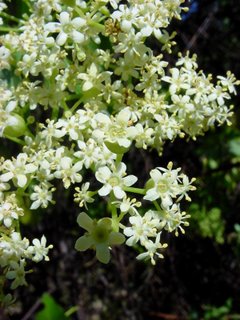Language / A Yiddisher kop
By Allison Schachter
"Call it English - The Languages of Jewish-American Literature" by Hana Wirth-Nesher, Princeton University Press, 256 pages, $39.50.
Literary scholars have begun to tell a new story about modern Israeli literature, one that acknowledges the legacy of Jewish multilingualism. Recent ground-breaking work in Hebrew literary studies by scholars such as Dan Miron, Chana Kronfeld and Yael Chaver has uncovered the suppressed connections between Hebrew and Yiddish, exposing the rich engagement of Hebrew writers with Yiddish and European modernisms. Language ideologies aside, the central figures of the Hebrew revival dreamed in Yiddish, even when they dreamed in their beds in the Yishuv.
This legacy of Jewish multilingualism, however, took shape quite differently in America. Whereas Yosef Haim Brenner only longed for a ticket to New York, many Jewish writers made good on such dreams and boarded ships bound for Ellis Island. Jewish-American literature has a different story to tell about the trajectory of Yiddish and Hebrew in the 20th century. For a brief period of time in America, there were Hebraists and Yiddishists who thought that they could continue the legacy of Jewish multilingualism on American shores. In the 1920s and 1930s, New York was a hub of Yiddish modernism, as well as a growing Hebrew literary center. However, the trajectory of Hebrew and Yiddish in America was radically different than in Israel, where Yiddish was legislated out of existence and Hebrew became the vernacular. Whereas Yiddish flourished among those Eastern European Jews who immigrated to America, it did not last more than a generation. Today, the last secular Yiddish newspaper is published on a weekly basis in both Yiddish and English.
Hebrew, on the other hand, never caught on as a language of secular Jewish cultural production. The story of American Hebrew remains an interesting chapter in Hebrew literary history, particularly the success of the American Hebrew poet Gabriel Preil, who began his career among the Yiddish Introspectivists (inzikhistim) and continued writing modernist Hebrew poetry on American shores. However, with few exceptions, Jewish-American immigrants assimilated quickly to the immigrant drive to become American, and this meant raising children who spoke English.
Hana Wirth-Nesher explores this complicated legacy in her book "Call it English: The Languages of Jewish American Literature." Wirth-Nesher's pioneering work investigates how not only Yiddish, but also Hebrew become absorbed into American literature through English-language Jewish writers. Some, like Abe Kahan, the editor of the Forverts, and Mary Antin were immigrants. Others, including Henry Roth, Saul Bellow and Cynthia Ozick, grew up with Yiddish as a mother tongue in their North American homes. A final group, which includes Philip Roth, did not know Yiddish, but were influenced by Yiddish culture.
Wirth-Nesher carefully examines the deeply felt presence of both Hebrew and Yiddish in the works of these writers, showing how writers both grapple with and exploit these literary languages. In order to make sense of this language wrestling, Wirth-Nesher traces the changing relationship of Jewish writers, immigrants or native-born, to Jewish languages. While Yiddish might at one time have been a sign of Jewish racial difference, it later became a "language without speech." At the same time, Hebrew is an ever-changing emblem of a transnational Jewish identity, the language of a shared textual history in the absence of a shared territorial homeland.
Abe Kahan is an important example of a writer who as early as the 19th century mediated between the Yiddish literary world and a new American readership. Kahan's 1896 novel "Yekl" portrays the lives of Eastern European Jews in New York, and this includes their language, Yiddish. Kahan, as Wirth-Nesher observes, chooses to represent their Yiddish speech in clear English, while capturing the mistakes and mispronunciations of their immigrant English. For example, take the speech of one of the characters from "Yekl": "Don't you like it? I do," Jake declared tartly. "Once I live in America," he pursued on the defensive, "I want to know that I live in America. Dot'sh a' kin' a man I am! One must not be a greenhorn. Here a Jew is as good as a gentile."
Kahan was influenced by the local color movement in American letters, which included writers like Mark Twain and Kate Chopin. Wirth-Nesher argues, however, that what is so different about Kahan is that he is writing "out of two linguistic, literary, and cultural frameworks.
" Though it could be said that much of American literature written by immigrants was attempting the very same tasks, Kahan established a literary tradition of making a Jewish cultural context legible to both Jewish and non-Jewish audiences. In part, he achieved this by translating Yiddish literary conventions into English, and thus brought them into the larger pantheon of American literature.
Saul Bellow offers Wirth-Nesher a much richer example of the multifaceted levels of Jewish literary translation. Saul Bellow was a Canadian-born, native Yiddish speaker, who received a traditional Jewish education. He famously translated Isaac Bashevis Singer's short story "Gimpel Tam" for the Partisan Review. As the story goes, Singer, who also became a Nobel laureate, never let Bellow touch a story of his again, for fear of being upstaged by the English-language impresario. However, the experience was instructive for Bellow, and Singer's Yiddish prose style is echoed in the explosive opening of Bellow's groundbreaking novel "The Adventures of Augie March," a work that would later influence the Beat generation.
Wirth-Nesher invites us to look deeper into the linguistic complexities of Bellow's translation of "Gimpel the Fool." Bellow's English translation is a forceful reckoning with both Hebrew and Yiddish. Wirth-Nesher illuminates Bellow's decision to translate the Hebrew prayer embedded in Singer's story, "El molei rachamim," into an American Christian idiom, while retaining other Hebrew and Yiddish words as markers of Jewish authenticity. She then goes further, reading Bellow's widely anthologized novella "Seize the Day" as a translation of "Gimpel the Fool," Singer's Eastern European Jewish story, into an American-Jewish context of assimilation.
These observations allow her to construct a convincing argument about Bellow's ambivalent reckonings with both the Jewish literary past and the Anglo-American literary tradition. Wirth-Nesher eloquently contributes to the study of Jewish-American literature, exploring the continued legacy of Jewish multilingualism. As she astutely notes, Jewish immigrants to America were not attached to the nations from which they emigrated, and instead brought a "transnational" legacy to American culture and letters.
Her work opens new doors for a reconsideration of the national and linguistic boundaries of American literature, long a literature of immigrants - immigrants who continue to bring their languages and literary traditions to bear on the history of American letters. From her home in Tel Aviv, she sheds light on the multiple trajectories of Hebrew and Yiddish from New York to Tel Aviv and everywhere in between. Situated in Israel, writing about the American literary context, Wirth-Nesher proves an important champion for non-national, or transnational, models of literary history. Dr. Allison Schachter teaches in the departments of comparative literature and Jewish studies at Vanderbilt University, Nashville, Tennessee.



0 Comments:
Post a Comment
<< Home